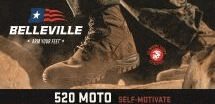Yesterday, the Department made this announcement:
Olin Winchester LLC, East Alton, Illinois, was awarded a $28,313,481 fixed-price with economic-price-adjustment contract for production of small caliber ammunition and the operation, maintenance, and modernization of the Lake City Army Ammunition Plant. Bids were solicited via the internet with three received. Work will be performed in Lake City Army Ammunition Plant in Independence, Missouri, with an estimated completion date of Sept. 27, 2029. U.S. Army Contracting Command, Rock Island Arsenal, Illinois is the contracting activity (W52P1J-19-F-0742).
Although it’s a very significant win for Olin Winchester, it has even larger implications for the Army’s future.
Lake City Army Ammunition Plant is a government owned, contractor operated facility. Most of the US military’s small arms ammo comes from that plant. It is currently run by Northrop Grumman, but that is all about to change.
Interestingly, Winchester is also teamed with AAI Textron on the US Army Next Generation Squad Weapons Program. For NGSW the Army seeks new ammunition, carbine, and automatic rifle to replace the current 5.56mm NATO M4A1 and M249 Squad Automatic Weapon. Although, at its very heart, NGSW is an ammunition development program. The ammunition will deliver the effects the Army is seeking as it retools to fight a near-peer competitor.
While one would argue that the government should have selected a cartridge and then challenged industry to build the best weapons to fire it, that’s not what they did. In NGSW, they gave industry a performance envelope and specified a caliber, offering 6.8mm projectiles to industry. Seeking performance similar to a .270 Win Short Mag, and instructing then to shed 20% weight over existing ammunition, they left the cartridge design to industry.
As the Army enters phase two of NGSW, they have down selected to three competing systems: AAI Corporation Textron Systems teamed with Olin Winchester for ammunition, General Dynamics OTS teamed with True Velocity for ammunition and SIG SAUER with their own ammunition solution. Of these, both Textron and GD’s solutions rely on polymer cases. Only SIG uses a metal case and it is a three-piece design combining steel and brass.
Here are the three competing ammunition offerings:
AAI Textron/Olin Winchester

General Dynamics OTS/True Velocity

SIG SAUER

Due to the costs associated with a wholesale change in both weapons and ammunition, the Army is understandably concerned with controlling costs by owning Intellectual Property associated with these designs. They are going to want as much of the data rights as possible transferred to them. Imagine the huge advantage Team AAI Textron will now have during final negotiations because their ammunition producer is running the factory it will be produced in.
One might argue that this contract award was made in a vacuum. After all, Program Executive Office Soldier owns the NGSW program and Joint Program Executive Office Armaments and Ammunition owns Lake City. But thanks to the Army’s recent Futures Command reorganization, both PEOs have representatives on the Lethality Cross Functional Team and are fully aware of one another’s activities, combining efforts of many programs, with special emphasis on NGSW. Remember, it’s really an ammunition program.
What’s more, LCAAP is old. It requires constant upkeep and the transition to a new ammunition for NGSW will require an entire new wing of the plant to be manufactured. Estimates are rumored to be around three-quarters of a billion Dollars to accomplish these capital improvements. If you look at the award, Winchester will hold the contract for the next decade. The Army plans to start rolling out NGSW in 2022.
The implications are of the value of producing the ammunition are even larger, as both Air Force and Marine Corps have signed on to NGSW. Naturally, United States Special Operations Command is also monitoring the program. One would expect close allies to join the US, once systems are fielded and show promise. All told, they are going to purchase a lot of ammo over the life of this program.
To be sure, Winchester is a capable company, currently selected to produce the new 9mm ammunition for Modular Handgun System. their ability to produce quality, safe and accurate small arms ammunition is without doubt. What’s interesting is their teaming with AAI Textron on the Case, Telescoped round which is unlike any currently fielded small arms ammunition. Not only is the design significantly different, resembling a shotgun round loaded with a sabot, but it requires an entirely new weapon operating system, with a rotating breech and the ammunition, both projectile and cartridge moving forward through the works, akin to an assembly line. Once again, they will have a serious leg up, knowing how to produce this unique cartridge and running the plant it will be built in, if CT ammunition is selected, of course.
After all, munitions are the gift that keeps on giving. An army will only buy so many weapons, but the munitions it fires are expendable. They’ve got to constantly be purchased. So is this contract award an indication of the shape of things to come, in the form of Case, Telescoped? Or, is it a guarantee that Winchester comes home a winner on NGSW, no matter which ammunition type is selected by the Army?
NGSW is an ammunition program, with weapons thrown in because something has to shoot it. The Army has already decided who will make that ammo. Now, they’ve got to decide what it will look like.





















































































































